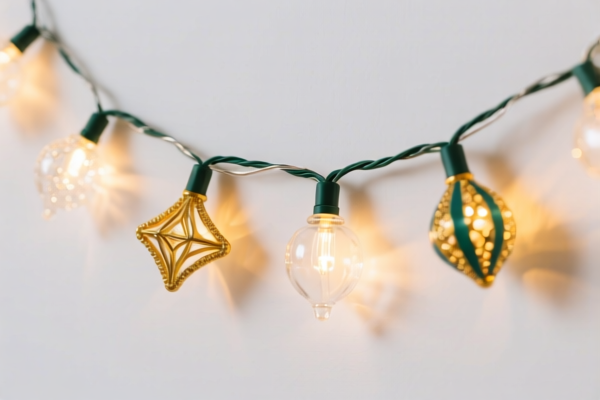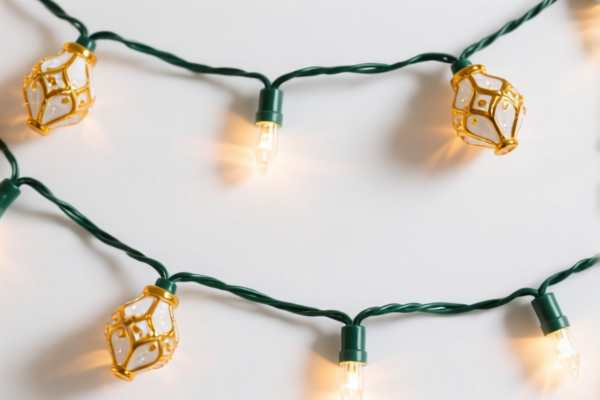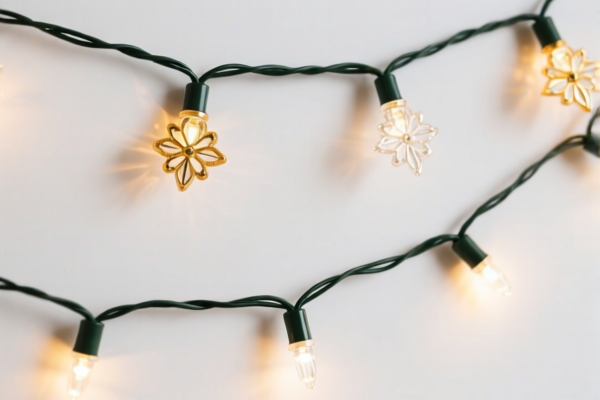| HS Code | Official Doc | Tariff Rate | Origin | Destination | Effective Date |
|---|---|---|---|---|---|
| 9601908000 | Doc | 41.2% | CN | US | 2025-05-12 |
| 9602005080 | Doc | 40.2% | CN | US | 2025-05-12 |
| 9602005010 | Doc | 40.2% | CN | US | 2025-05-12 |
| 3926903300 | Doc | 36.5% | CN | US | 2025-05-12 |
| 3926909989 | Doc | 42.8% | CN | US | 2025-05-12 |
| 3921904010 | Doc | 34.2% | CN | US | 2025-05-12 |
| 3921904090 | Doc | 34.2% | CN | US | 2025-05-12 |




Decorative Sequins
Decorative sequins are small, shiny, disc-shaped ornaments used for embellishment on clothing, accessories, and other decorative items. They are typically made from plastic or metal and come in a wide variety of colors, shapes, and sizes.
Material
- Plastic: Commonly Polyvinyl Chloride (PVC) or Polyethylene Terephthalate (PET). Plastic sequins are lightweight, inexpensive, and available in a vast range of colors and finishes.
- Metal: Traditionally made from brass, aluminum, or steel. Metal sequins offer a higher degree of shine and durability than plastic, but are generally more expensive. They can be prone to tarnishing.
- Glass: Historically used, glass sequins are fragile and less common today, but provide a unique brilliance.
- Biodegradable Materials: Newer options include sequins made from plant-based materials, offering a more sustainable alternative.
Purpose
The primary purpose of sequins is aesthetic enhancement. They add sparkle, texture, and visual interest to a surface.
Function
Sequins function by reflecting light, creating a shimmering effect. They are attached to a base material using various methods (see Usage Scenarios below).
Usage Scenarios
- Clothing: Sequins are widely used on dresses, tops, skirts, jackets, and other garments, often in patterns or as all-over embellishment.
- Accessories: Found on handbags, shoes, hats, belts, and jewelry.
- Crafts: Used in scrapbooking, card making, home décor projects, and other DIY applications.
- Dance and Performance Costumes: Frequently used to create eye-catching effects in stage performances.
- Beauty: Applied as cosmetic enhancements (e.g., eyeshadow, body glitter).
Attachment Methods
- Sewing: The most common method. Sequins have a small hole through which they are stitched to the fabric.
- Gluing: Adhesive can be used for temporary or more delicate applications.
- Heat Transfer: Special heat-activated adhesives allow sequins to be applied with an iron.
- Embedded: Sequins can be directly molded into fabrics during manufacturing.
Common Types
- Flat Sequins: The most basic type, with a flat, circular shape.
- Cupped Sequins: Have a concave shape, creating a more three-dimensional effect.
- Holographic Sequins: Exhibit iridescent colors that change with the viewing angle.
- Iridescent Sequins: Display a rainbow-like sheen.
- Laser Sequins: Cut with lasers to create intricate designs.
- Paillettes: Larger, more ornate sequins often shaped like flowers or other motifs.
- Micro Sequins: Very small sequins used for subtle shimmer or detailed patterns.
- Tube Sequins: Hollow, cylindrical sequins that create a unique texture.
Decorative sequins fall under the classification of articles of plastics and articles of other materials. Here's a breakdown of relevant HS codes based on the provided information:
-
3926903300: This HS code covers “Other articles of plastics and articles of other materials of headings 3901 to 3914: Other: Beads, bugles and spangles, not strung (except temporarily) and not set; articles thereof, not elsewhere specified or included: Handbags”. While this code specifically mentions handbags, it also includes beads, bugles and spangles, which are closely related to sequins.
- 39: Chapter 39 covers plastics and articles thereof.
- 26: Heading 3926 covers other articles of plastics and articles of other materials.
- 90: Subheading 392690 covers other articles.
- 33: Further specifies beads, bugles and spangles, not strung and not set, and articles thereof.
-
3926909989: This HS code covers “Other articles of plastics and articles of other materials of headings 3901 to 3914: Other: Other”. This is a broader category that could encompass decorative sequins not specifically captured under other subheadings.
- 39: Chapter 39 covers plastics and articles thereof.
- 26: Heading 3926 covers other articles of plastics and articles of other materials.
- 90: Subheading 392690 covers other articles.
- 99: Further specifies other articles not elsewhere specified.
According to the provided reference material, the HS code options related to 'decorative sequins' are limited, with only the following 2 found.
Please note that both HS codes have a base tariff of 30% effective April 2, 2025. HS code 3926903300 has a base tariff of 6.5% and HS code 3926909989 has a base tariff of 5.3%.
Customer Reviews
No reviews yet.